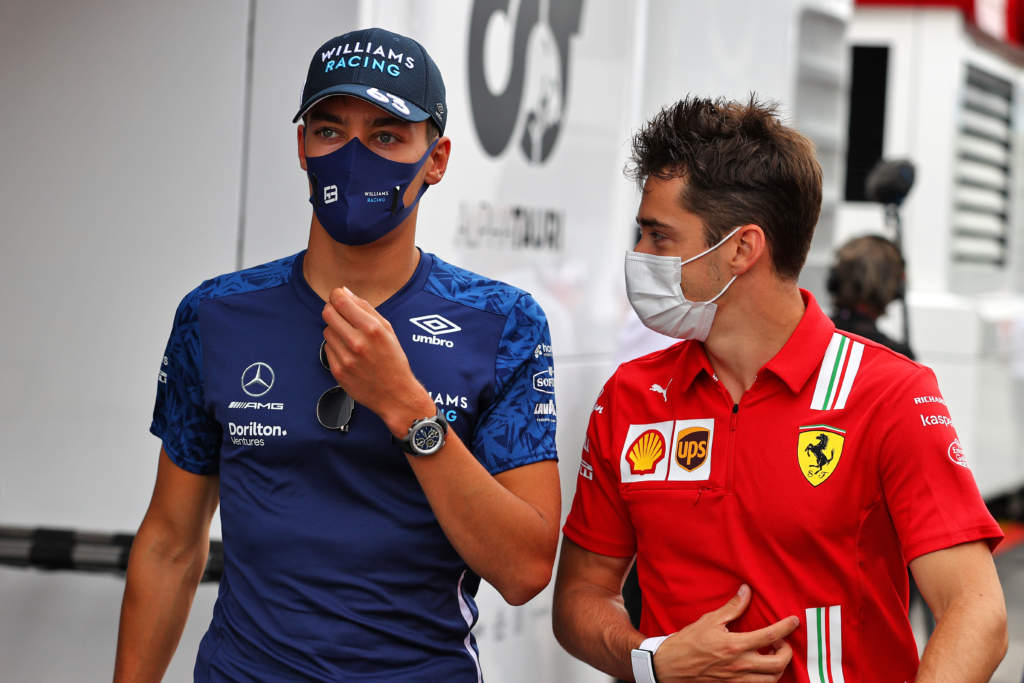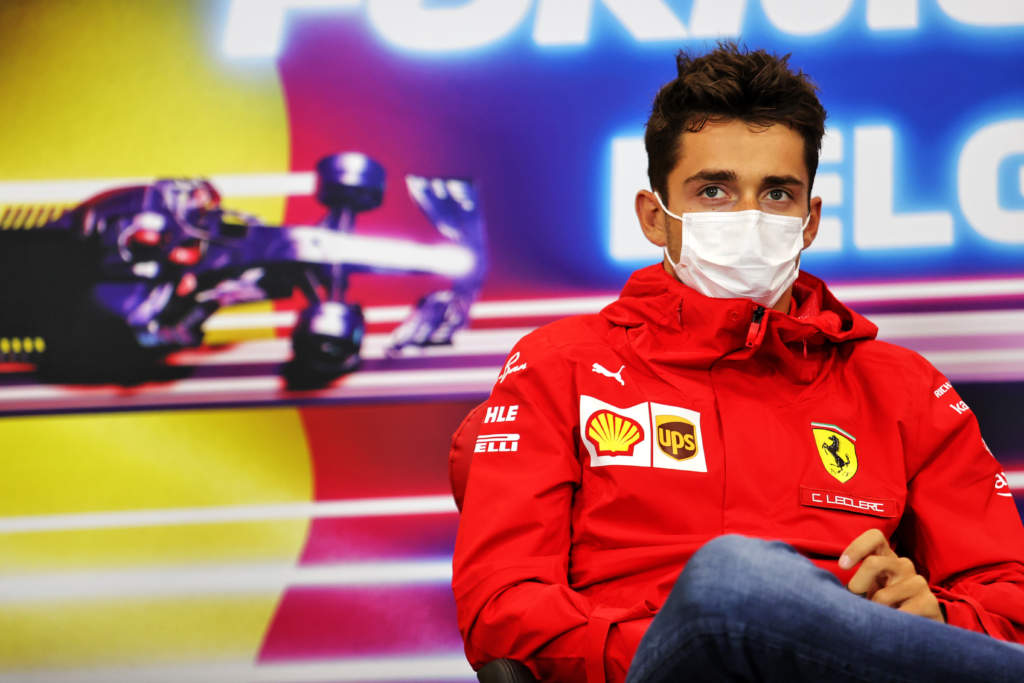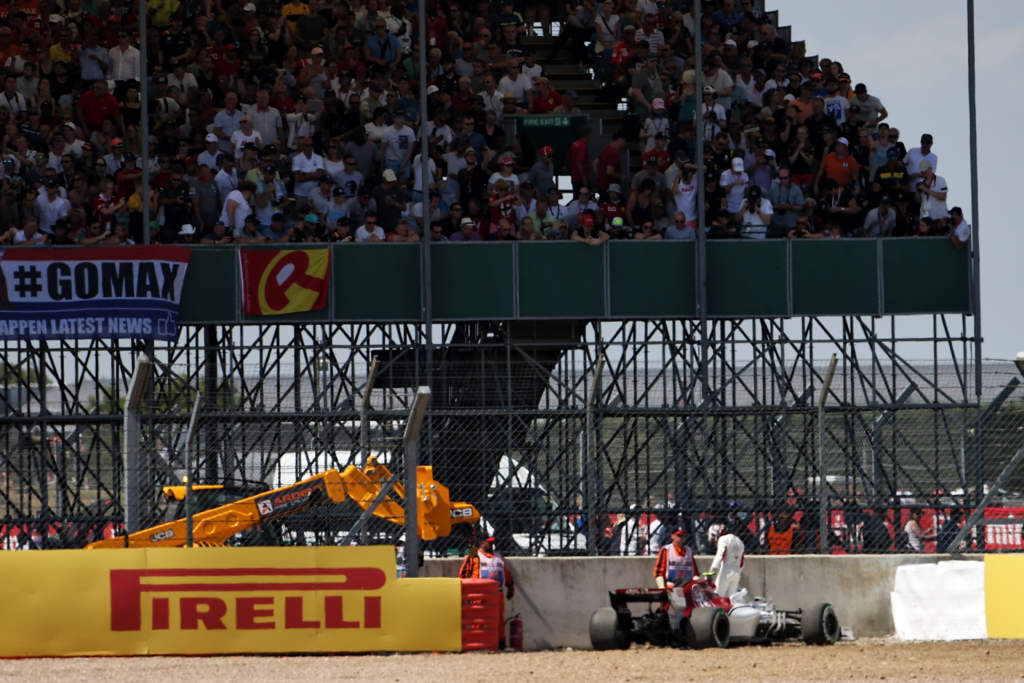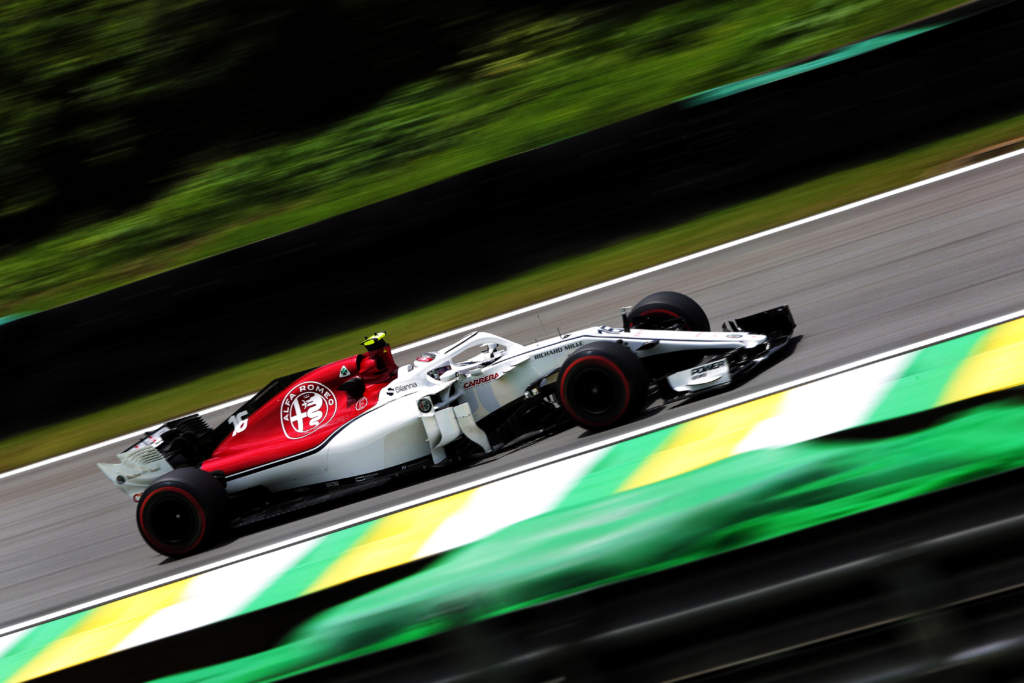Up Next

As the Formula 1 paddock waits to learn whether George Russell will drive for Mercedes in 2022 there are two lessons from Charles Leclerc to judge whether that opportunity is merited.
All expectations are that Russell will get that drive and there are few inside F1 who doubt Russell deserves the opportunity.
However, among some doubters there remains a degree of uncertainty that Russell isn’t the mega-talent that many claim, chiefly because of his lack of points finishes, his Sunday declines from Saturday peaks, and his compromised team-mates.
Leclerc clearly isn’t part of that group as he thinks Russell “definitely” deserves the Mercedes drive. As he said on Thursday at the Belgian Grand Prix: “It is always very difficult to judge in Formula 1, because the cars are so different and obviously with George being at Williams, it is always difficult to judge how much of a good job he’s doing.”
To do that, though, Leclerc’s own career offers a handy template – and the man himself also willingly provides further insight to The Race to support his original claim.
Leclerc’s and Russell’s careers have a charming parallel up to the point Leclerc’s F1 trajectory spiked and Russell’s plateaued. They were both karting stars who had eye-catching rookie seasons in cars, went on to enjoy race-winning Formula 3 campaigns and then clinch back-to-back titles in GP3 and Formula 2 – before making the step to F1 with back-of-the-grid teams.

Leclerc then stepped up from Sauber to Ferrari after just one season in F1 and became a two-time race winner in his first year with the Scuderia, but Russell’s rookie year – one year after Leclerc’s – was spent mired at the back with Williams. And while the second and third seasons have been better he has still been a lower-midfield runner more often than not.
Though Leclerc was able to escape that kind of inertia quickly, his 2018 season at Sauber gives him a rare command of Russell’s situation.
Sauber quickly grew in competitiveness that year so qualifying and Sunday heroics were a little easier for Leclerc to achieve but he still understands the task of impressing at a lesser team better than most – and he thinks Russell is doing exactly what he did.
“It’s mostly the team-mate I was taking into account,” he says when asked by The Race about how he judged his performances further down the order at Sauber.
“And then we have an overall picture as a team, going into a weekend we know more or less where we are going to be.
“If you keep going over the expectations, then you know you are doing a good job.
“That’s exactly what George is doing in Williams at the moment. And it’s good for him.”

That is a valid appraisal of Russell’s efforts because his intra-team record at Williams is much the same as Leclerc’s in 2018 as they reflect one thing: domination.
Leclerc had more of a known quantity in Marcus Ericsson and beat him 17-4 in qualifying over the season with an average pace advantage of around six tenths.
Russell was never outqualified by Robert Kubica in 2019, when the Pole made his incredible F1 comeback but was not the driver he’d been prior to his life-changing rally accident in 2011, and is yet to be outqualified by Nicholas Latifi. His advantage over Kubica was just over six tenths and against Latifi he’s been around 0.5s and 0.4s quicker on average in 2020 and 2021 respectively.
It indicates that Russell is not only besting his team-mates he is only getting much more out of the machinery than they are. That Russell was beaten to Williams’s only points finish of 2019 by Kubica and sits behind Latifi in the 2021 standings are purely a quirk of exceptional race circumstances that benefitted them more than Russell.
So that’s the first lesson: judge a driver on whether he’s maximising his car and use his team-mate and the team’s own expectations to do that.

Russell, like Leclerc, performs well in that regard. His speed is undeniable and was further evidenced by his incredible effort on his Mercedes one-off at the Sakhir Grand Prix where he very, very nearly beat Valtteri Bottas to pole position. That remains Russell’s only qualifying defeat to a team-mate but it can be regarded as a heroic failure.
This brings us to another Russell criticism though, regarding his inability to convert great qualifying results into great race results. Leclerc was fantastic at this as his points record at Sauber suggests.
His Sauber was a more competitive prospect than any of the Williams cars Russell’s had to race with – so their respective Sunday records can’t be compared like-for-like.
But Leclerc’s second lesson is that people should place more value on the qualifying performance that enables such a high grid slot, rather than the fall down the order in the race.

“To do one special lap at a given time is very, very difficult,” he says. “And also for the best drivers on the grid it is very, very difficult.
“In a race, though, we are not pushing 100% like we are in qualifying. So it shows a bit more the performance of the car.
“I can see what George is going through. I can understand that situation.
“I don’t know whether it affects him or not. I don’t think so. And it shouldn’t – he’s doing a great job.”
THREE TIMES LECLERC DID WHAT RUSSELL IS DOING
Edd Straw
Leclerc reached Q3 eight times and scored points 10 times during his exceptional rookie season with Sauber in 2018. After a difficult start in the first three races, he bagged his best result of the campaign with sixth place in an incident-packed Azerbaijan Grand Prix.
But there were other moments where he made an even bigger impression, delivering the kind of special performances that marked him out as a dead-cert to star for Ferrari in the future.
Like Russell’s remarkable performances in the unfancied Williams, these efforts from Leclerc were easy to underestimate if you simply glanced at the results.
DNF, BRITISH GRAND PRIX

Leclerc took his first pseudo-victory in F1’s so-called ‘Class B’ by beating the rest of the midfield in the 2018 Russian Grand Prix. But by rights, that first midfield win should have come at Silverstone, which was arguably his first great weekend in F1.
He reached Q3 for only the second time and started ninth, jumping to seventh at the start. One of those places was always temporary given Mercedes driver Lewis Hamilton was on a recovery charge after being tipped into a spin by Kimi Raikkonen on the first lap, but in the first stint he ran behind only the Renault of Nico Hulkenberg. On lap 18, he was called in for his one pitstop and would have undercut his way past Hulkenberg given he produced a good in-lap.
But with that midfield ‘win’, and sixth place overall, within his grasp, he was ordered to stop with a loose wheel thanks to an error at that pitstop.
Q2, BRAZILIAN GRAND PRIX

Leclerc made an error on his Q3 lap at Interlagos that probably cost him a place at the front of ‘Class B’, but it was astonishing that he was in the top-10 shootout at all.
When it started to rain towards the end of Q2, the laptimes dropped off and nobody else in the pitlane thought it was possible to improve. But Leclerc insisted that he should stay out rather than giving up despite the team suggesting he should do so, and with the rain easing but the track still a little damp, he dragged out a laptime good enough to advance to the final stage of qualifying.
He drove well in the race, finishing seventh and at the front of ‘Class B’ behind only the Mercedes, Ferrari and Red Bull drivers. But without that moment of magic in Q2, when even his own team didn’t feel it was worth persevering, none of that would have been possible.
P7, ABU DHABI GRAND PRIX

Leclerc finished his rookie season with a run of three consecutive seventh places, all strong performances given the machinery. But although the strategic disadvantage of starting on hypersoft tyres meant he was beaten by midfield rival Carlos Sainz’s McLaren in the Abu Dhabi Grand Prix, it was the early laps when he caught the eye.
With the advantage of ultra-grippy rubber, he charged from ninth on the grid to pass Daniel Ricciardo’s Red Bull for fifth on the run into Turn 11 before the safety car briefly interrupted the race. He then held fourth for a couple of green-flag laps before making his early stop.
It was only a cameo, but Leclerc showed he absolutely belonged at the front of the grand prix pack that day and came away with another good result for Sauber.
Some drivers are just naturals when it comes to racing at or near the front given their first chance to do so. Leclerc did it, and so did Russell when he had his shot with Mercedes in the 2020 Sakhir Grand Prix.







